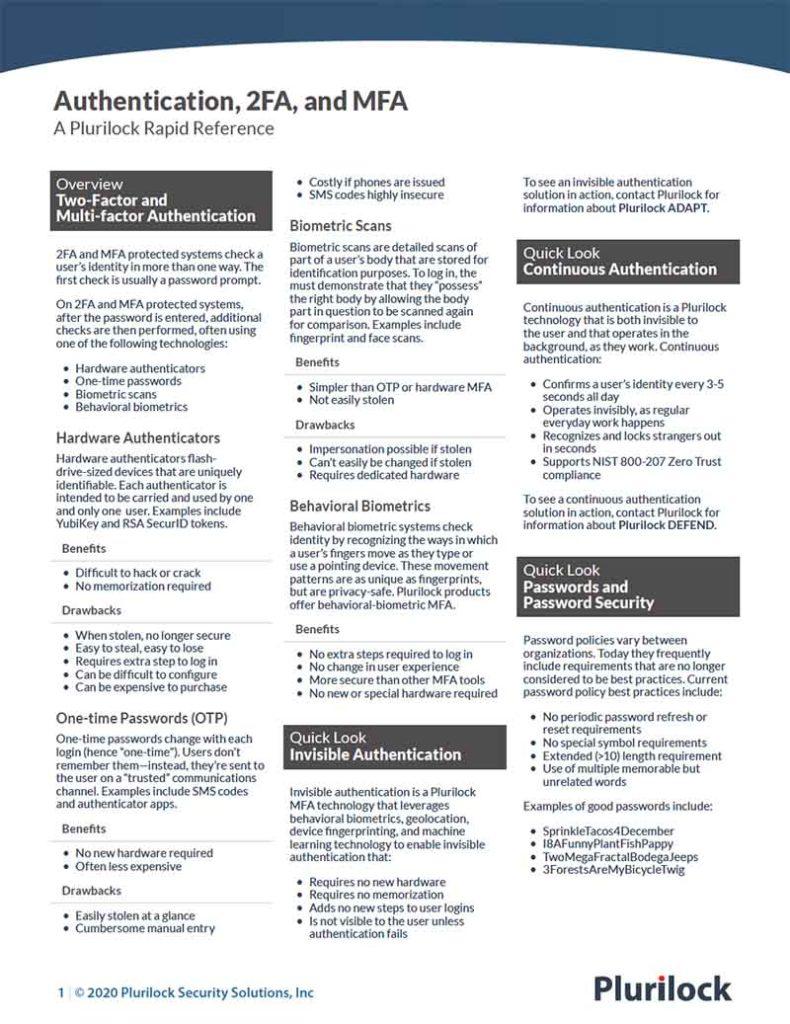Cybersecurity Reference > Glossary
Two-factor Authentication (2FA)
Two-factor Authentication, or 2FA, is a form of authentication requiring that a user prove their identity using an additional identity factor beyond their username and password.
Security professionals generally recognize three basic identity categories that can be used to prove identity—things that only the intended user knows (like a password or code), things that only the intended user has (like a mobile phone or token fob), or things that only the intended user embodies (like a fingerprint or facial structure).
Two-factor authentication, generally regarded as more secure than authentication requiring only one factor, requires that an identity factor that is not knowledge-based also be provided for authentication. In the most common form of 2FA currently in use, a password is combined with proof of a mobile phone's possession, which is supplied by entering a code delivered at the time of login to the phone in question.
Cases in which the user must provide two of the same kind of identity factor to authenticate, such as a password followed by a secret phrase or answer, are not true two-factor authentication, but are rather more properly referred to as two-step or multi-step authentication.

2FA/MFA Rapid Reference
Authentication at a glance
Download the 2FA/MFA Rapid Reference now:
- 2FA and MFA basics and common solutions
- The benefits and drawbacks of each
- Glossary of authentication terms
2FA/MFA Rapid Reference
- 2FA and MFA basics and common solutions
- The benefits and drawbacks of each
- Glossary of authentication terms















